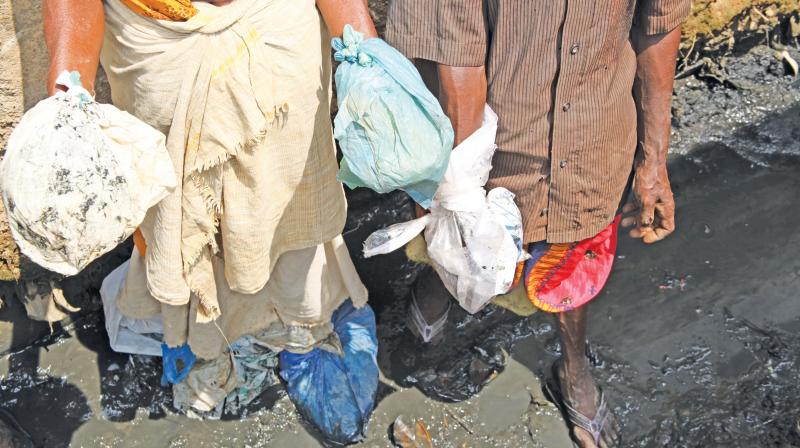Manual scavenging deaths: Tamil Nadu tops list
State’s shame: 144 deaths reported as per data.

Chennai: With 144 deaths related to manual scavenging, Tamil Nadu tops the list with the highest number of deaths in the country as per data by the Ministry of Social Justice and Empowerment. This information was released by the Union Minister of State for Social Justice and Empowerment Ramdas Athawale on July 9 in the Lok Sabha, responding to a series of questions posed by MPs Asaduddin Owaisi and Syed Imtiaz Jalee.
Of the 620 deaths reported across the country since 1993, Tamil Nadu had the highest number of sewer deaths with 144, followed by Gujarat with 131. In the third place was Karnataka with 75 lives being lost while working in sewers and septic tanks. “Specifically, 88 manual scavengers died of asphyxiation in the last three years ((2017, 2018, 2019)”.
Manual scavenging remains a dominant practice across India despite the passage of The Employment of Manual Scavenging and Construction of Dry Latrines (Prohibition) Act in 1993.
The Act was again revised 20 years later in 2013 and stressed not only on eradicating manual scavenging but rehabilitating families which were dependent on manual scavenging as a profession. These numbers throw light on the ineffectiveness of the 2013 act.
However, members of the Safai Karamchari Andolan (SKA), a national movement committed to the eradication of manual scavenging and the rehabilitation of scavengers said that the survey by government itself is a 'documented crime'. According to their survey, there were 1,340 deaths in the past 10 years across the country, and in Tamil Nadu, 294 deaths were reported in the same period. D Samuel, Tamil Nadu convenor of the Safai Karamchari Andolan (SKA), said, “The existing law, The Prohibition of Employment as Manual Scavengers and their Rehabilitation act, which was passed in 2013 banned manual scavenging, but till date, the practice of manual scavenging continues in India. The act calls for a survey to find the exact number of people working in this field, but nothing has been done yet,” he said.
Meanwhile, the biggest hurdle faced is that even if the manual scavengers themselves take the initiative to get registered under 'the Prohibition of Employment as Manual Scavengers and their Rehabilitation Rules', government officers do not accept the filled-in forms, which beats the purpose of the survey itself, Samuel added. Further, he also points to the strong caste-based segregation of labour in society, with almost all manual scavengers belonging to Dalit communities.
“We agree to clean septic tanks manually because of extremely low salaries in other kinds of contract sanitation work. Many workers want to leave this work, but government is not doing enough for us,” says R.Vijaya Pandi, a sanitary worker from Virudhunagar.
With government still in denial, the number of manual scavengers death will increase proportionally. The Prohibition of Employment as Manual Scavengers and their Rehabilitation Act, 2013 has not been a deterrent as manual scavengers continue to be employed due to the apathy of the general public and lack of proper implementation of the law by the authorities.

